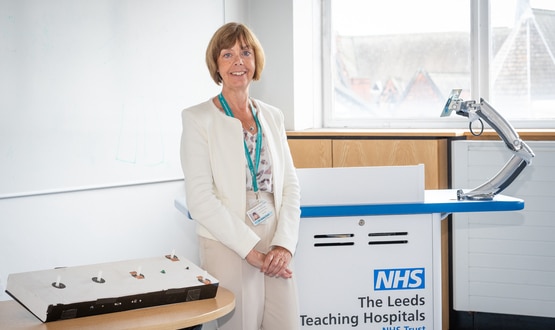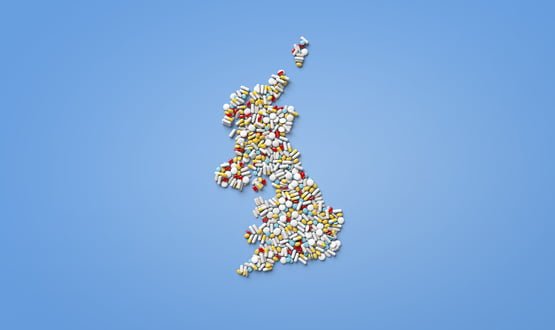Data sharing agreements signed across Bradford’s health and social care
- 11 April 2017

New city-wide data sharing agreements, covering key NHS and social care organisations in the city, have been signed in Bradford allowing for researchers to see pseudonymised patient information across health and care.
In Bradford, all 88 GPs, three clinical commissioning groups, two trusts, the council and a palliative charity have all agreed to share de-identified data on childhood obesity and frailty in the elderly.
The initiative forms part of the Connected Health Cities (CHC), a £20 million three-year project to improve health care across the north of England by giving academics working in Bradford access to health data. The agreements were completed at the start of April.
Stefan Williams, a neurology doctor and clinical leadership fellow on the CHC’s Yorkshire programme, told Digital Health News that the data produced as a “natural by-product” of health and social care is a “really rich resource for improving patient’s pathways of care”.
“The data exists in pockets in the different parts of health and social care and that makes no sense because patient pathways of care happen across all these different places.”
The data will be stored and analysed at Bradford Teaching Hospitals NHS Foundation Trust, and Williams said that patient identifiable details are removed at source.
The information shared could include all routine care for the two projects such as event logs, diagnosis codes and prescription codes, said Williams.
Bradford has a population of 1.5 million, and all patients are automatically opted into the data sharing initiative, with an opt-out option available at local GPs.
Williams stressed that all patient the data was pseudonymised, and that patient confidentiality was maintained through the de-identification process.
“We’re not building a big database”, he said.
The sensitivity around using patient data was demonstrated through the controversial care.data project.
Care.data was first approved in 2012 as an ambitious project to expand the Hospital Episode Statistics and to link them to other data sets, starting with GP data, and to make this available to researchers and others.
It came under heavy criticism for confusion over what the data could be used for and how patients could opt out, concerns that were further exacerbated when NHS England ran an ill-judged public information campaign in January 2014.
Care.data was officially closed last year, but there are fears that parts of the national data collection and sharing programme still live on, particularly from privacy group, MedConfidential.
Yorkshire and the Humber is one of the four pilot CHCs, with the others in Cumbria and the north east, Greater Manchester and the north west coast.
The Great North Care Record in the North East is one of the CHC’s projects, and had signed up 96% of GP practices in the region by February.
Williams said he was proud of what the city has achieved, and stressed “what we’ve done is reach data sharing agreements locally, so it’s the grass roots, group up way of sharing data rather than a top down” method.
The intention is for the data to allow the city to improve the way the services look after patients.
He said that one of the challenges was working across multiple organisations “because everyone has different priorities and different leadership”.
In a statement, John Wright, director of Connected Yorkshire CHC said he was “taken aback by the fantastic level of support” for the programme in Bradford and Airedale.
CHC is funded by the Department of Health through the Northern Health Science Alliance (NHSA), and was set up to reduce inequalities between the north and south of England in January 2016.
The organisations that are contributing de-identified data to CHC are:
- All 88 GP practices
- Bradford City CCG, Bradford Districts and Airedale CCG, Wharfedale and Craven CCG
- Airedale NHS Foundation Trust, Bradford District Care NHS Foundation Trust, Bradford Teaching Hospitals NHS Foundation Trust
- Bradford Council’s health and wellbeing department
- Sue Ryder (palliative care charity)





4 Comments
This is really good news, but please think …
“The data exists in pockets in the different parts of health and social care and that makes no sense because patient pathways of care happen across all these different places.”
IT’s the care that’s important and the patient pathway may take the person all around the country as they are cared for … the North, South, West, East and of course Bradford.
There may be a fear of processing care data nationally but it may well be far more efficient and it would definitely ensure that, with regard to citizens access to their health data, all are treated equally.
It is not anonymised (or aggregate), will have to be pseudonymised if to be linked together.
Is the data de-identified, or pseudonymised? It cannot be both. That makes no sense. More wool-pulling.
Population 1.5 million? That’s West Yorkshire. Bradford is just over half a million as the council’s website makes clear “The latest population figures produced by the Office for National Statistics (ONS) on 23 June 2016 show that an estimated 531,200 people live in Bradford District – an increase of 3,000 people (0.6%) since the previous year.” https://www.bradford.gov.uk/open-data/our-datasets/population/
Comments are closed.